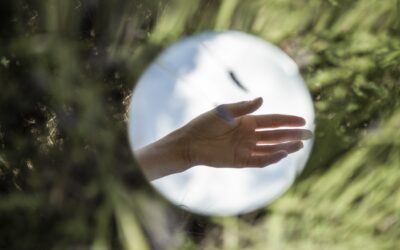I get the question a lot.
“How do I create my unique style?”
This is one of the hardest things to answer because it has to take so many disparate parts of your photography into account.
And in the end, you cannot create your style, you can only find it.
Creating a style is looking forward.
And looking forward usually involves the word “like”…
I want to shoot like this.
I want to shoot like Tim Tadder.
I want to shoot food.
I want to shoot environmental portraits like Finn Beales.
Like, like, like…
So I get it, you like their work and want to emulate it as your style.
While you’re at it, I think you should invest in the re-emergence of 8-track tapes and new Charlie’s Angels movies.
The return will be the same… bupkiss.
All you can ever achieve shooting “like” someone is to be a poor substitute or someone who missed the opportunity to be unique by focusing on the work of someone else.
Look, it’s super good to have influences.
We can learn from them, be inspired by them, and yes, even shoot like them for a while.
But just for a while.
In jazz, we say it this way.
Imitate, Assimilate, Innovate.
— Clark Terry, Jazz trumpet genius.
And it is a truly great path for photographers as well.
Because it teaches by inspiration, it inspires because it engages, and it creates because it builds.
We learn to do something like someone we admire.
Say it is using strobes on location with a wide-angle lens.
We have a target in front of us… we have something to measure it against.
And we struggle a bit until we get it.
WE CALL THAT PART IMITATE.
And then that style becomes second nature to us.
We are no longer dealing with the techniques, but looking beyond the technique to the finished project. We can see the finished image right there in our mind’s eye.
You have both the chops and the aesthetic to make images like you see in your head but unfortunately, they are still looking like the photographer you copied
WE CALL THAT PART ASSIMILATE.
Then you start trying new stuff mixed in with what your technical abilities are comfortable with. Your vision seems to change, perhaps you stop using wide-angles, and add more and more lights to your setups.
The images you are seeing in your head are predicated on this new vision you have and are not necessarily like the photographer that you learned to imitate.
You have achieved a new level in your own work, one that is uniquely yours.
WE CALL THAT PART INNOVATE.
Really sad so many of us stop at assimilating and never go further to find how to innovate what we have learned.
But that is OK, I guess.
It just isn’t your style, it’s someone else’s.
How do you find your style?
First, you have to have gotten to innovate.
Then after shooting for a long while – 6 months if you are really prolific, or a couple of years if you are a semi-pro hobbyist you look back at the work you loved most.
That’s right, you look back to find your style, not try to develop a style to move forward with.
Looking at the images that you love, the ones that the clients went crazy for, and the ones everyone is talking about… and you will see what ties them together.
That tie – that is your style.
Now to be sure, your style may not be a radical departure from everything known to exist in the photographic universe.
It just has to be yours.
And it may be similar to another’s – so what?
Similar is not copying. Similar is totally fair.
Coming to the same visual conclusion happens, but I am still sure that even when two stylistic photographers show similar work, the work is still unique to them in many small and important ways.
Want to find your style?
Look back on your work and ask yourself which of the images you loved making the most? Which of them still matter to you? Which of them gives you a real sense of pride to share and show?
You will likely then be able to find a thread of continuity through the images and begin to think about that thread when creating new imagery.
Voila… it isn’t that hard, it just requires you to shoot a lot.
Which you should be doing anyway.
See ya next time.
Recent Journal Posts
Stop Being the Best Photographer No One Knows About
Stop Being the Best Photographer No One Knows AboutThere was a time — maybe 10, 15 years ago — when having a solid portfolio and being a decent human being got you work. Word-of-mouth. A few referrals. Maybe a feature in PDN if you were lucky. That time is over, gone,...
Stop Fearing Failure: Be Terrified of Regret.
Stop Fearing Failure - Be Terrified of Regret.Failure Sucks Less Than Regret. There’s a quote I heard recently that nailed a truth I’ve been preaching for years:"Stop fearing failure, but be terrified of regret." Many of the photographers I work with—especially those...
CREATE A “DREAM FIFTY” FOR MAXIMUM IMPACT
DO YOU HAVE A DREAM 50?Create a “Dream Fifty” for maximum clarity and impact. Dream-50 If your marketing plan is sorta like “post some stuff and hope for the best”, well… You’re not alone. But you’re also not in control. Drumroll please! Enter the Dream 50 List — a...



